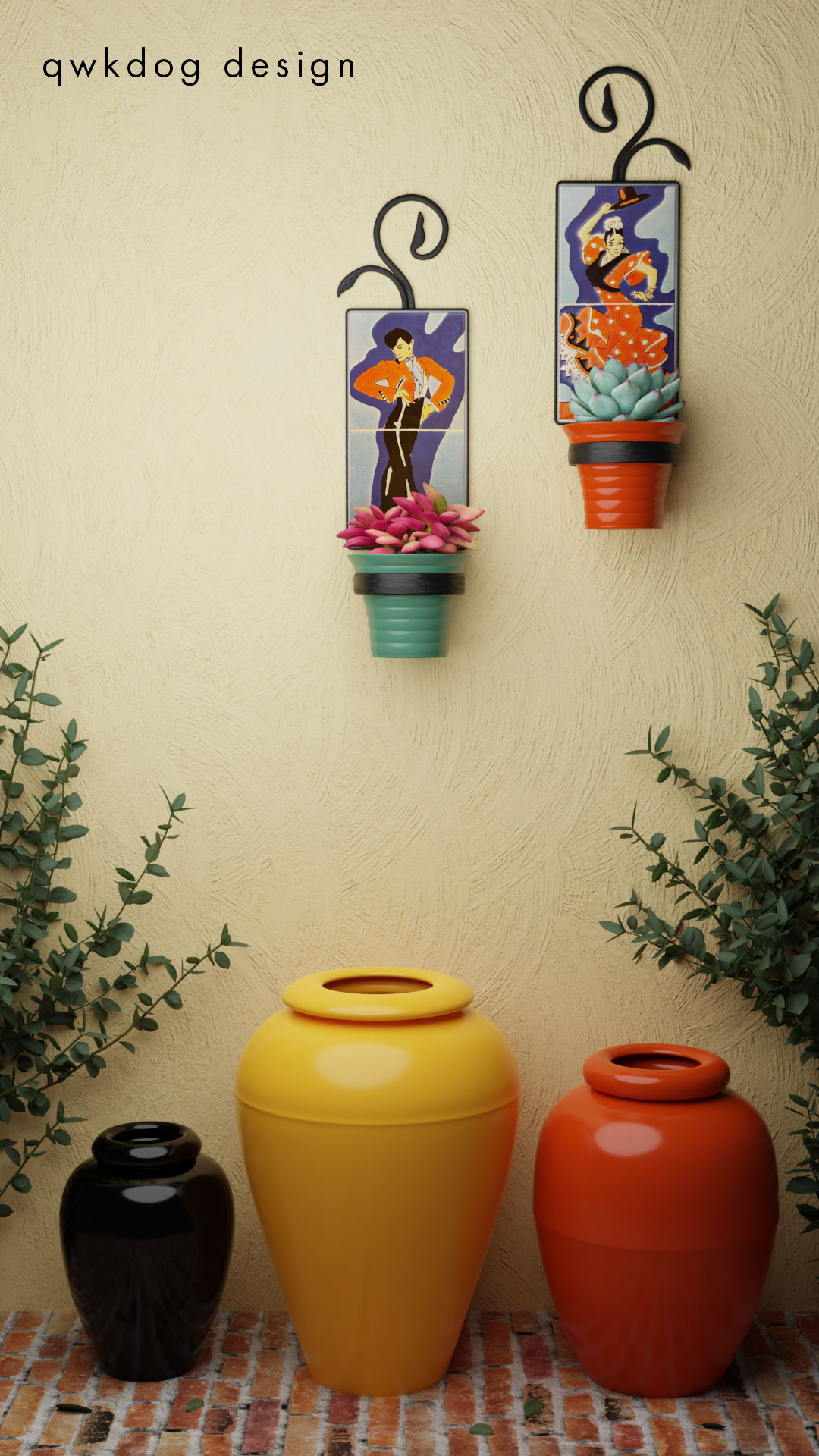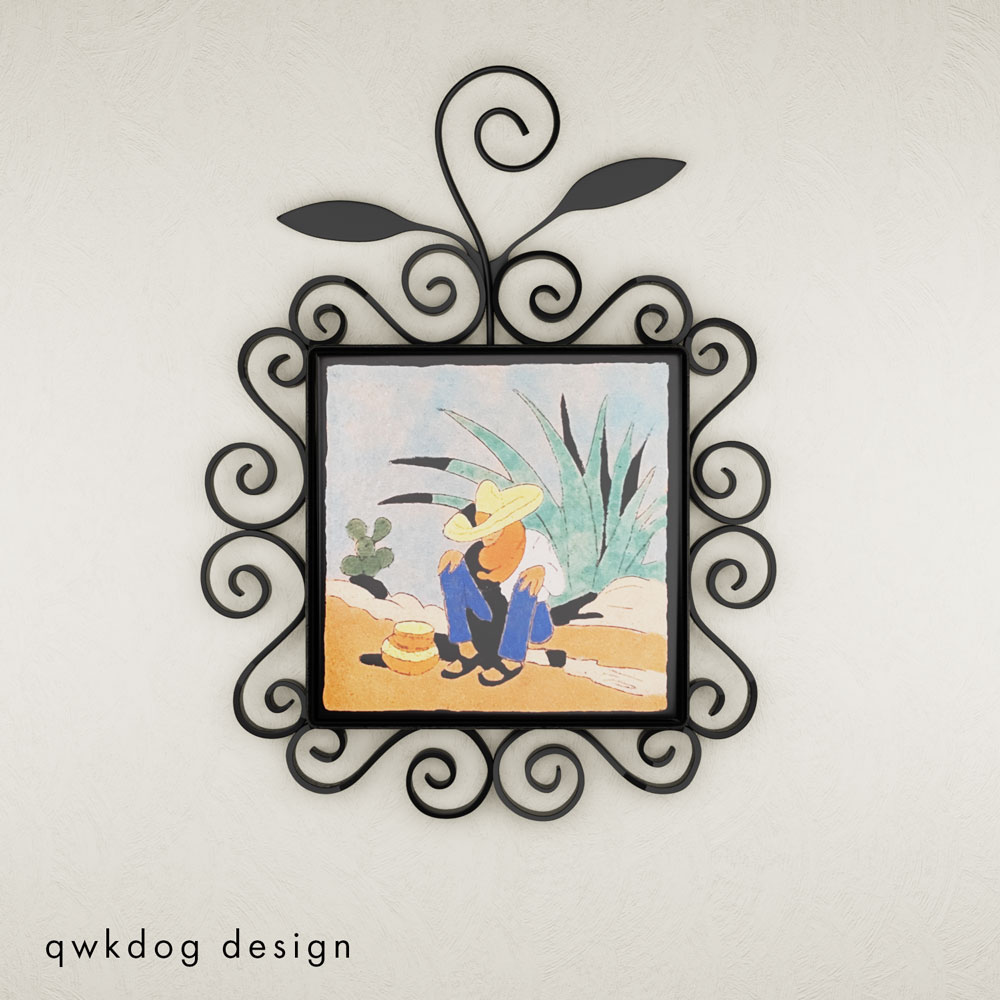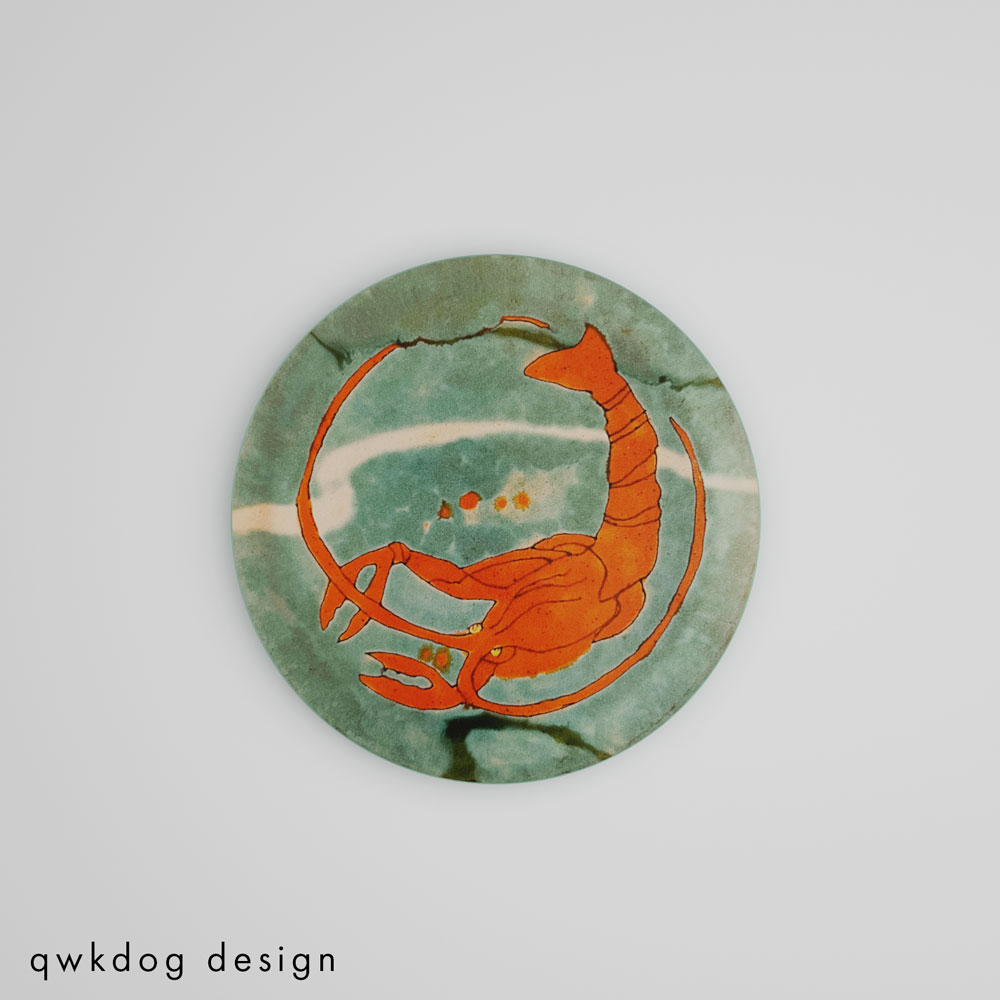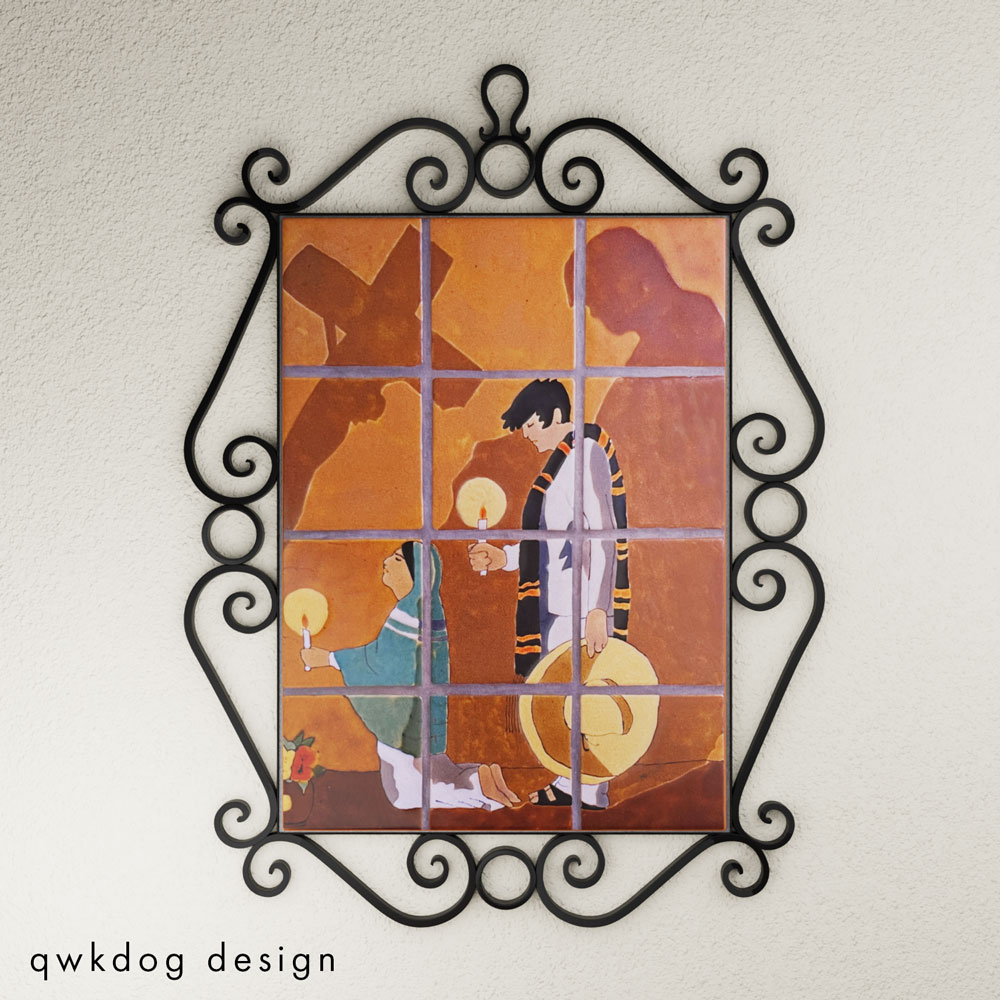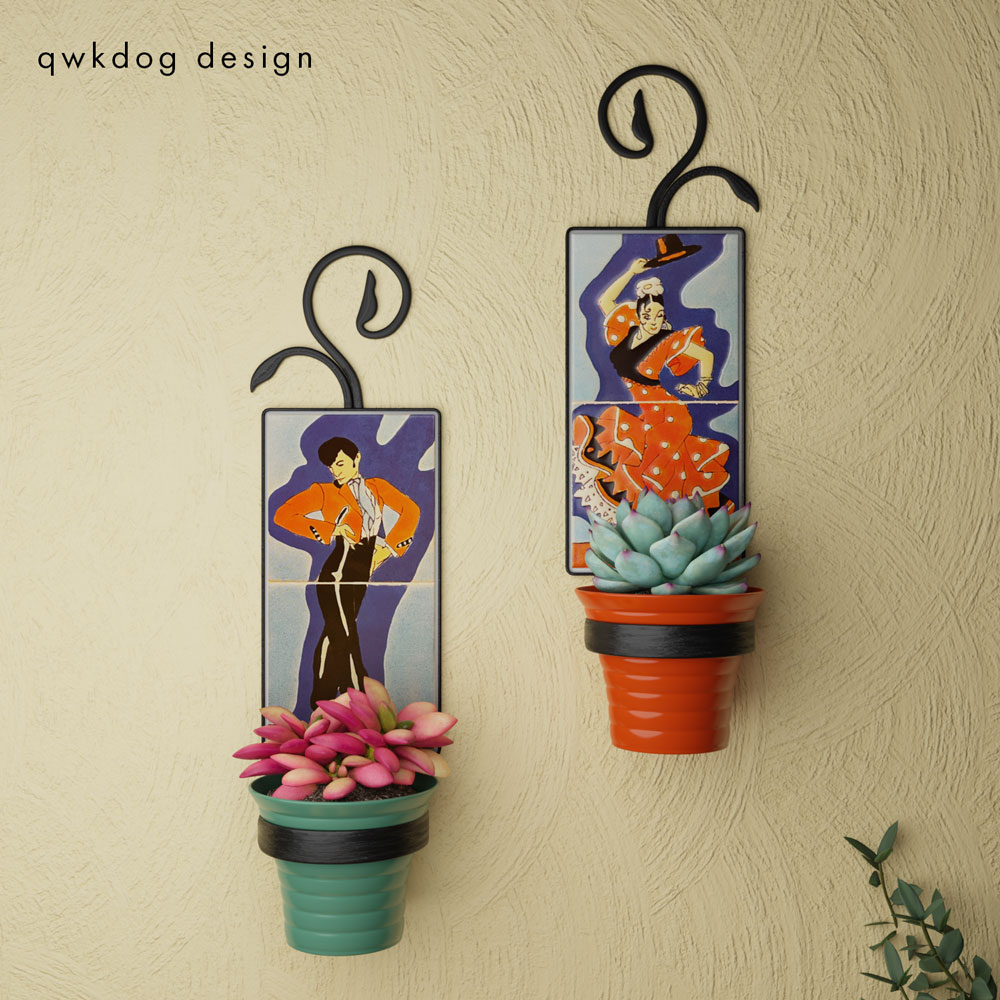Ethel Wilson Harris, an enthusiast of traditional Mexican art and design, started three tile workshops in the San Antonio, Texas area during the 1930s: Mexican Arts & Crafts, San Jose Potteries, and Mission Crafts. Mexican Arts & Crafts (MAC), her first pottery venture, launched in 1931 and opened in the granary of the Mission San Jose. A small shop attached to the pottery sold wares promoting Mexican and Spanish Revival influenced designs to area tourists.
The principal designer, Fernando Ramos, was responsible for the collective potteries’ well-known romanticized scenes of Mexican life, local culture and dancers. Harris hired Ramos as principal artist at MAC while still a high school student. He left in 1934 to take up dancing full-time and studied Spanish, Mexican and Gypsy dance in Mexico. Along the way, he met and married another dancer, Carla Montel. The pair became a popular dance team in the 1940s, appearing in nightclubs and movies. Flamenco dance themes are common in MAC pottery. In the late 1930s, Harris copyrighted Ramos’s designs and continued to use them for many years after his departure.
Harris’s workshops gained additional exposure through participation at the 1933 Chicago World’s Fair. By 1934, her success led to expansion with the San Jose Pottery, started up as a production facility for the smaller MAC workshop which couldn’t handle the kilns needed for tile manufacture. San Jose Pottery also manufactured a line of dinner-, art and tileware known as “Pan American Ware.” These pieces featured Colonial, Western, Indian and Mexican scenes and are highly collectible today. Concurrently with her work at San Jose Pottery, the workshop began producing tile murals and wrought iron tile tables for the 1936 Texas Centennial Exposition. MAC/San Jose Potteries also produced wares for the 1939 New York World’s Fair.
Harris copyrighted Ramos’s designs in 1937. The various iterations of the San Jose pottery companies continued to produce those designs until they closed in 1977.
You can find examples of San Jose Pottery Tile at the link below.






